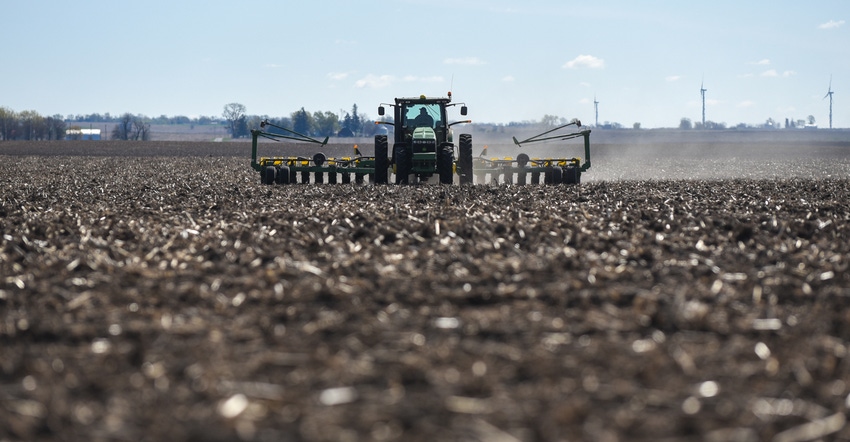
Have you jumped on the early-soybean-planting bandwagon yet, or are you still on the fence about the decision? Consider the rewards of planting soybeans early while being aware of the risks.
“The big reason to plant soybeans early is yield, and the way we get more yield is by getting more sunlight,” says Austin Edwards, Dekalb Asgrow technical agronomist covering central Illinois. “We maximize sunlight by planting around the April 20 time frame.”
Plus, think weed control.
With early planting comes early growth, which can create a larger canopy across the soybean field, he says. This helps reduce some weeds and conserves soil moisture.
Risks to consider
But where there’s reward, there’s risk. Edwards shares risks that can occur with planting soybeans:
Early frost damage. Last year, farmers saw frost early on in the season, especially in areas with more soil residue at planting. Farmers in eastern Illinois faced three different frost events from mid- to late April, which caused these producers to make a difficult decision of whether or not to replant soybeans. Those who planted into no-till or cover crops saw extensive soybean loss. Multiple growers had to replant soybeans due to significant stand loss in areas of high residue last year when planting early.
Early-season pests. From an insect standpoint, be on the lookout for bean leaf beetles. These pests typically attack some of the first-planted soybean fields that emerge and congregate there. At that time, they can chew on the cotyledons, stems and growing points. If there is heavy enough pressure and the growing points are being chewed on, resulting in killing the plant, treatment would be needed.
Sudden death syndrome. SDS in soybeans can be a common occurrence, especially for farmers who plant soybeans early. Planting in cooler and wetter soils can be a primary cause for SDS. Illinois didn’t have many major outbreaks last year, but SDS could be found regularly through fields all across the state.
So how do you minimize these risks?
As a whole, farmers should concentrate on planting into ideal soil conditions to prevent compaction issues and help minimize SDS, Edwards says.
“Hybrid selection is also extremely important,” he says. “Look for a soybean variety that has good SDS vigor and emergence scores if soil conditions are less than ideal.”
And think about a seed treatment to help control bean leaf beetles and SDS, Edwards adds.
Weed management is also still important. “Make sure to apply a product with a residual. Waterhemp isn’t emerging until mid-May, and we’re out planting in mid-April,” he says. Go for chemistry that has early and midseason control for waterhemp.
Other factors
Edwards shares some other factors to keep in mind when planting early:
Soil conditions. It’s easy to get in the groove of planting once you start, but keep soil conditions in mind and be prepared to pause if needed. Cool and dry conditions are OK for planting, but cool and wet aren’t. Soybean plants can handle a lot of conditions, but planting in poor soil conditions could cause hiccups.
Planting date. Around April 20 is often the most opportune time for early planting across all of Illinois, with plenty of sunlight and fewer risks such as early frost damage. However, it depends on the weather. You can have more risk by planting in early April, just because of increased opportunity for cooler weather and frost. But if the conditions are good in early April, go ahead and get the soybeans in the ground. After May 1, a reduction in yield is more likely due to decreased sunlight.
Planting depth. If farmers are planting soybeans in April, heat and pounding rains can cause crusting, creating an emergence challenge. So, plant soybeans deeper than usual — 1.75 to 2 inches — and the soybeans will have a better opportunity to emerge as usual.
About the Author(s)
You May Also Like






